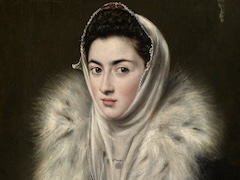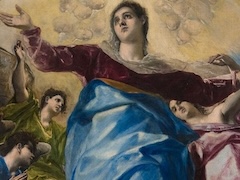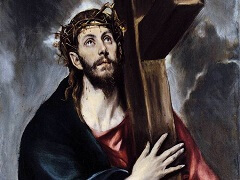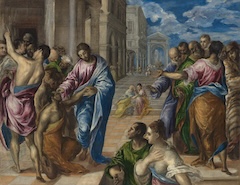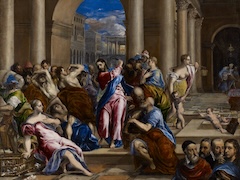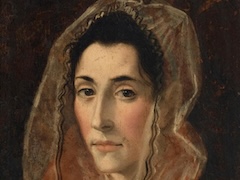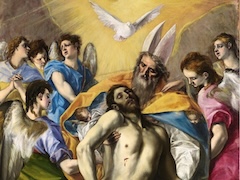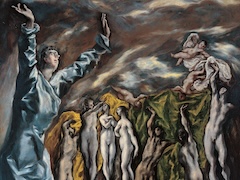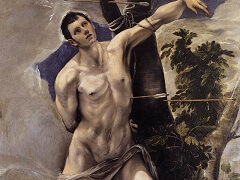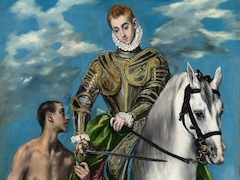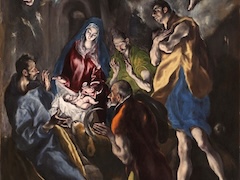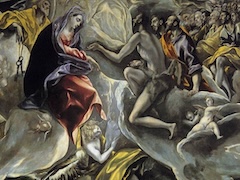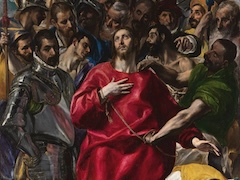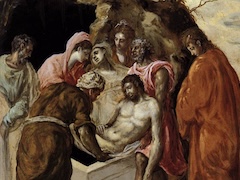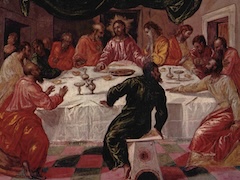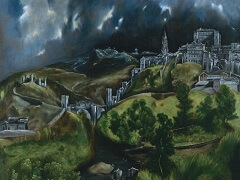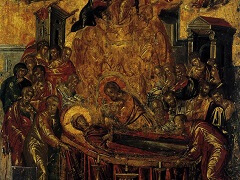Resurrection, 1584-94 by El Greco

This painting is marked by the boldness so characteristic of El Greco's last period. Thus, a later date, c. 1608-10, seems to be more likely than Cossio's 1584-94.
The theme is the major theme of Greco's art: the witnessing of the body's levitation: this self-liberation of the body offers the sole tangible proof of the spirit's victory over matter, as this mystical concept would be expressed in verbal and naive terms.
The witnesses in El Greco share in the progression of the event. The downward pull of the fallen soldier's formidable weight impedes the not less formidable upward rush of the other soldiers; this creates such an outburst of anxiety and escape among the bodies that, in order to prevent the destruction of all, a dynamic outlet had to be found.
The outlet exists in the almost intangible push a push expressed by the void between the tip of the foot and the tip of the flagstaff given to the newly created young body of Christ. A miraculous, yet natural, ascension of this luminous new body is achieved. The disorder of bodies in turmoil below becomes an accompanying support; the equilibrium of rhythm is re-established, and with it the continuity and interconnection of subject and pattern.

